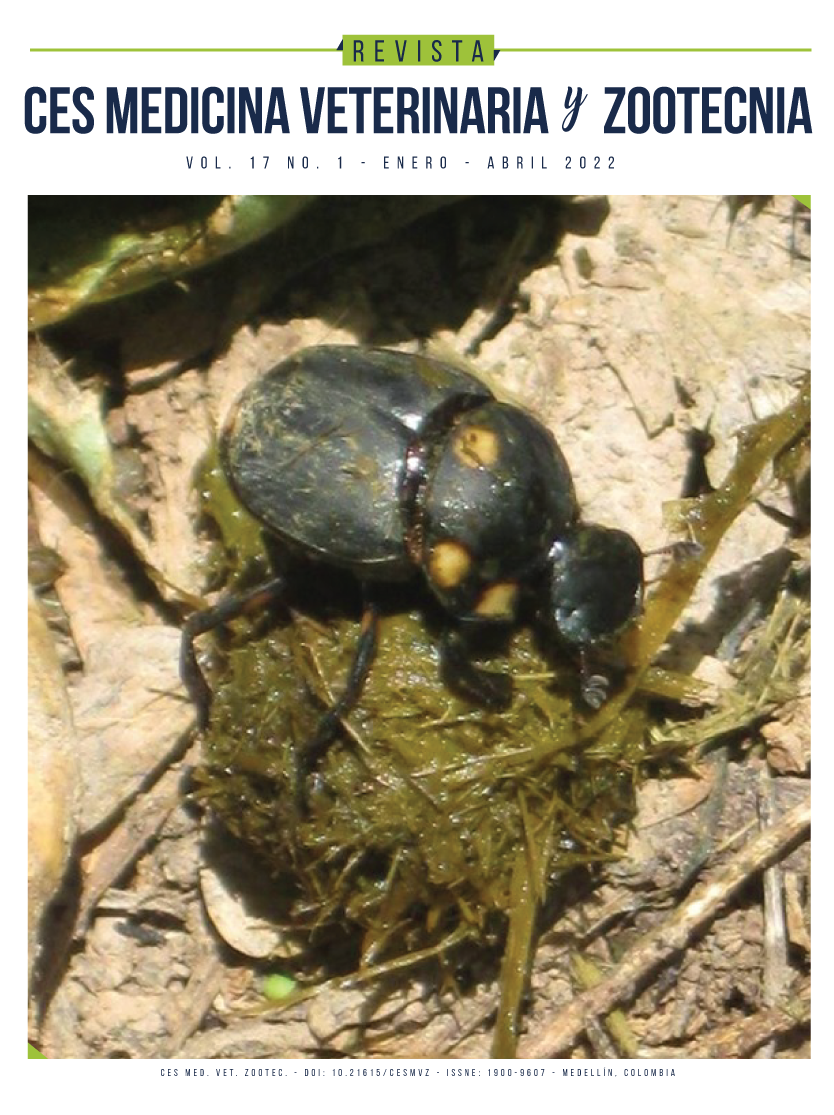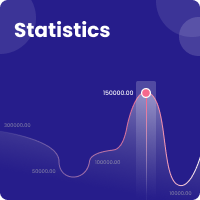Comparison between diffuser hose and PVC pipe for aeration in production of <i>Litopenaeus vannamei</i> with biofloc at different protein levels
DOI:
https://doi.org/10.21615/cesmvz.6373Keywords:
ammoniacal nitrogen, dissolved oxygen, sediment, shrimp, nutritional (Sources: ICYT, AIMS)Abstract
When implementing biofloc technology, aeration is one of the problems to obtain good productive results, therefore, the objective was to compare the efficiency of PVC pipe and diffuser hose, as an aeration system in crops with biofloc and two levels of protein. A completely randomized design with factorial arrangement was applied with four treatments with three replicates each, with the two aeration systems and with two levels of crude protein (CP) in the balanced feed in Litopenaeus vannamei shrimp productions, distributors of the following way, for treatment one (T1) PVC pipes and 28% PB were achieved; for T2, diffuser hose and 22% PB; for T3, diffuser hose and 28% PB; for T4, PVC pipe and 22% PB, produced with biofloc. The variables weight, height, feeding and the treatment factor significantly influence the concentration of dissolved oxygen (DO, mg/l) in the afternoon. T1 is the one that behaves best in the afternoon and T3 in the morning, the treatment with the lowest sedimentation at 20 and 30 minutes in the Imhoff cone test was T4 and the highest sedimentation was T3. There was no significant difference in survival between treatments, protein levels did influence OD concentrations. The use of PVC pipe provides an increase in weight and DO concentration in relation to the diffuser hose system with 22% and 28% crude protein.
Downloads
References
Beltrán M. Innovación en el sector acuícola. Ra Ximhai, 2017; 13 (3): 351-364. http://revistas.unam.mx/index.php/rxm/article/view/71530/63120
Ibarra E, Carratalá S, Proaño J. Determinación del Índice de Importancia Relativa en Oreochromis sp. cultivadas con biofloc y alimento balanceado. La Técnica, 2015; 14 (2): 62-71. https://doi.org/10.33936/la_tecnica.v0i14.583
Ibarra E, Proaño J, Llanes J. Evaluación de tres niveles de proteína en cultivo de camarón blanco (Litopenaeus vannamei) con tecnología biofloc. Rev. AquaCUBA, 2020; 37 (2): 83-91. https://www.latindex.org/latindex/ficha?folio=7351
Azim ME, Little DC. The biofloc technology (BFT) in indoor tanks: Water quality, biofloc composition, and growth and welfare of Nile tilapia (Oreochromis niloticus). Aquaculture, 2008; 283 (4): 29–35. https://doi.org/10.1016/j.aquaculture.2008.06.036
Bossier P, Ekasari J. Biofloc technology application in aquaculture to support sustainable development goals. Microbial Biotechnology, 2017; 10 (5): 1012-1016. https://doi.org/10.1111/1751-7915.12836
Chaverra S, García J, Pardo S. Efectos del biofloc sobre los parámetros de crecimiento de juveniles de cachama blanca Piaractus brachypomus. Rev CES Med Zootec, 2017; 12 (3): 170-180. http://dx.doi.org/10.21615/cesmvz.12.3.1
Fleckenstein L, Tierney T, Ray A. Comparing biofloc, clear-water, and hybrid recirculating nursery systems (Part II): Tilapia (Oreochromis niloticus) production and water quality dynamics. Aquac Eng., 2018; 82: 80-85. https://doi.org/10.1016/j.aquaeng.2018.06.006
Martínez-Córdova L, Martínez-Porchas M, Emerenciano M, Miranda Baeza A, Gollas-Galván T. From microbes to fish the next revolution in food production. Crit Rev Biotechnol. 2016; 37 (3): 87-295. https://doi.org/10.3109/07388551.2016.1144043
Krummenauer D, Peixoto S, Cavalli RO, Poersch L, Wasielesky W Jr. Superintensive Culture of White Shrimp, Litopenaeus vannamei, in a Biofloc Technology System in Southern Brazil at Different Stocking. J World Aquac Soc., 2011; 42 (5): 726-733. https://doi.org/10.1111/j.1749-7345.2011.00507.x
Samocha Tzachi. Sustainable biofloc systems for marine shrimp. India. British Library.1st Edition. Elsevier and Book Aid International A. 2019. https://www.sciencedirect.com/book/9780128180402/sustainable-biofloc-systems-for-marine-shrimp
Hernández L, Londoño J, Hernández K, Torres L. Los sistemas biofloc: una estrategia eficiente en la producción acuícola. Rev CES Med Zootec., 2019; 14 (1): 70-99. http://revistas.ces.edu.co/index.php/mvz/article/view/5020
de Sousa A, Pinho SM, Rombenso AN, de Mello GL, Emerenciano MG. Pizzeria by-product: A complementary feed source for Nile tilapia (Oreochromis niloticus) raised in biofloc technology?. Aquaculture, 2019; 501 (25): 359–367. https://doi.org/10.1016/j.aquaculture.2018.11.055
Gaona C, Serra F, Furtado P, Poersch L, Wasielesky W Jr. Biofloc management with different flow rates for solids removal in the Litopenaeus vannamei BFT culture system. Aquacult Int., 2016; 24 (1): 1263–1275. https://doi.org/10.1007/s10499-016-9983-2
Wasielesky W, Atwood H, Stokes A, Browdy CL. Effect of natural production in a zero exchange suspended microbial floc based super-intensive culture system for white shrimp Litopenaeus vannamei. Aquaculture., 2006; 258 (1–4): 396–403. https://doi.org/10.1016/j.aquaculture.2006.04.030.
Emerenciano M, Ballester E, Cavalli R, Wasielesky W Jr. Effect of biofloc technology (BFT) on the early postlarval stage of pink shrimp Farfantepenaeus paulensis: Growth performance, floc composition and salinity stress tolerance. Aquacult Int., 2011; 19 (1): 891–901. https://doi.org/10.1007/s10499-010-9408-6
Ibarra E, Llanes J, Rodríguez B. Caracterización nutricional del biofloc desarrollado con agua del Pacífico ecuatoriano para el cultivo de Litopenaeus vannamei. Cub Agri Sci., 2019; 53 (4): 395-402. http://www.cjascience.com/index.php/CJAS/article/view/929
Daniel N, Nageswari P. Exogenous Probiotics on Biofloc based Aquaculture: A Review. Curr Agri Res., 2017; 5 (1): 88-107. http://dx.doi.org/10.12944/CARJ.5.1.11
Ramos-Avasolaa S. , Karstulovica C. , Gamboaa C. , Gamarrac J. , Catalánd M. ¿Son reproducibles las mediciones dosimétricas a bajas dosis en cardiología intervencionista?. Rev Chil Radiol., 2016; 70: 75. DOI: 10.1016/j.rchira.2016.06.003
Ramos Pison M., Vega Yáñez N., Morales Fritis L., González Zapata F., Sandoval Tapia D. Empatía y estudiantes de kinesiología. Rev Ciencias Médicas. 2019: 295-301. http://scielo.sld.cu/scielo.php?script=sci_arttext&pid=S1561-31942019000200295&lng=es.
Quintero S, Tolosa M, Aguilar O. Tecnología del biofloc en un cultivo de mojarra roja (Oreochromis sp.) en la etapa de levante. Rev Innv en la U. 2013; 5(1):23-32. https://revistas.unilibre.edu.co/index.php/innovando/article/view/3845
de Morais A, Abreu PC, Wasielesky W Jr., Krummenauer D. Effect of aeration intensity on the biofilm nitrification process during the production of the white shrimp Litopenaeus vannamei (Boone, 1931) in Biofloc and clear water systems. Aquaculture. 2020; 514 (1): 734516. https://doi.org/10.1016/j.aquaculture.2019.734516
Malpartida, Pasco.J. Aeração em cultivos superintensivos de tilapias Oreochromis niloticus, em bioflocos e com troca mínima de agua. [Tesis de doctorado]. Florianópolis: CORE, Universidade Federal de Santa Catarina, Centro de Ciências Agrárias, Programa de Pós-Graduação em Aquicultura; 2015. https://core.ac.uk/display/30433529
Harun A, Mohammada N, khwanuddin M, Jauharic I, Sohaili J, Kasan N. Effect of different aeration units, nitrogen types and inoculum on biofloc formation for improvement of Pacific Whiteleg shrimp production. Egypt J Aquat Res., 2019; 45 (3): 287-292. https://doi.org/10.1016/j.ejar.2019.07.001
Xu WJ, Pan LQ. Evaluation of dietary protein level on selected parameters of immune and antioxidant systems, and growth performance of juvenile Litopenaeus vannamei reared in zero-water exchange biofloc-based culture tanks. Aquaculture, 2014; 426-427: 181–188. https://doi.org/10.1016/j.aquaculture.2014.02.003
Downloads
Published
How to Cite
Issue
Section
License
Copyright (c) 2022 CES Medicina Veterinaria y Zootecnia

This work is licensed under a Creative Commons Attribution-NonCommercial-ShareAlike 4.0 International License.
| Article metrics | |
|---|---|
| Abstract views | |
| Galley vies | |
| PDF Views | |
| HTML views | |
| Other views | |



